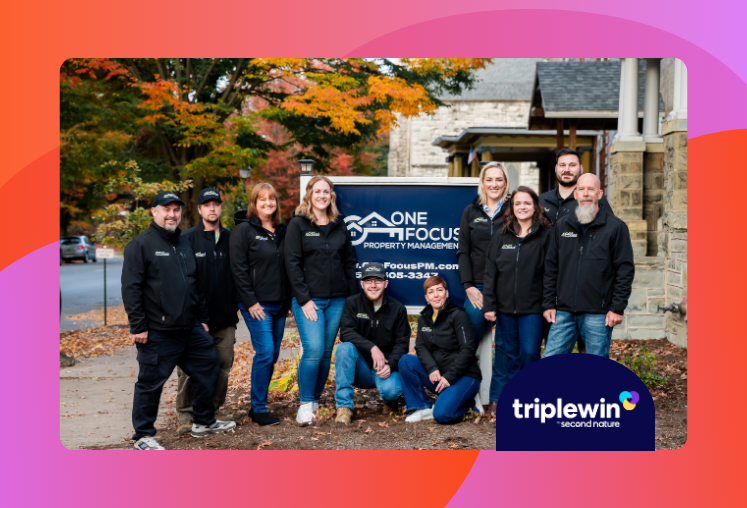
Structuring your Management Fees to Incentivize the Right Outcomes
It’s a fundamental principle of economics that incentives drive behavior. When you pay someone to do something, they’re more likely to do that thing. In property management, your revenue from fees—vendor fees, resident fees, and owner fees—provides that financial incentive, whether you realize it or not. For example, think about a cleaning service where employees are only paid hourly. If they mess up jobs and get called back to fix them, they’re now incentivized to mess up jobs just to guarantee themselves more working hours and therefore more pay. There should be a penalty for callbacks, or they should be paid by the job, and only when it’s done. Property managers often fall into the same trap of incentivizing the wrong behaviors, in part because we encourage each other to do it. We encourage each other to layer on extra fees, even if they’re contrary to the owner’s best interest. Instead, let’s set a fee structure that motivates the types of behaviors we want to see. Show me the fee and I’ll show you the outcome Each and every fee that you charge for your services is incentivizing some kind of behavior, either by your staff, your residents, or your investors. It’s vital to take a deep look at what the potential unintended outcomes are of those fees so that you don’t end up incentivizing the wrong behaviors. For example, when you charge a late fee to residents that effectively doubles, triples, or quadruples your profit for that unit that month, and it goes straight into your own pockets, you’re incentivizing your company to let residents pay late, because it’s more profitable for you. You’re discouraging your team from proactively sending rent reminders and finding ways to get residents to pay on time, even though that’s what’s best for the people you work for: your clients. A small fee to cover labor is one thing, but turning counterproductive behavior into a profit center is another. I’m of the belief that good property managers should be able to maximize their revenues in this industry, but they shouldn’t do it in a way that pits property managers against owners—and both of them against residents. What you charge for, how much you charge, and how you charge it is a highly personal decision, but I stand by the principle that we can design better fee structures that incentivize the right behaviors for our clients. What the traditional property management model gets wrong There are some pretty standard fees that the vast majority of property managers today charge. The problem is, most of these fees are incentivizing the complete wrong behavior. What do I mean by that? Let’s look at some of the most common fee types: High leasing fees and turn fees: They’re designed to reward property managers for finding and signing great residents, but the side effect is that they actually encourage turnover. When you get paid more for finding a new resident, why would you work to retain the existing one? Late fees: Like I said earlier, this actually incentivizes late-paying residents. If you profit significantly from residents paying late, that’s a good thing for your business and you’re now incentivized to allow late payments rather than stamping them out. Again, it’s fine to cover labor costs when you have to chase down late payers, but don’t treat it as a windfall. High markups on maintenance: This incentivizes your team to allow big-ticket items to break, because it means a higher fee for fixing it compared to just performing proper preventative maintenance. It’s antithetical to keeping the property in top condition. With traditional models, property managers actually make the most money when things go worst for the owners. It’s the best for PMs when residents pay late every month, move out every year, and do maximum damage to the property, even though those are all bad things for the investor. It’s a problem of unbalanced incentive structures. Incentivizing the right outcomes There’s a way to build a fee structure that is both profitable for your company and better aligned with outcomes that are good for your clients. And to be clear, I don’t believe the pendulum should swing all the way to the other side, where property managers are charging absolutely no fees and aren’t getting paid fairly for what they’re doing. We should still charge extra money when we do extra work. We should just do it in a way that’s mutually beneficial. What do we actually want to achieve? We have to start by determining exactly what types of things we want to encourage, and only then can we set a fee structure that incentivizes that. We can all agree that real estate investors are best served by quality, on-time-paying residents who treat the properties they rent with great care. We can also agree that we need to cover our costs when we do extra work. But the lion's share of our profits should come from the scenarios that are best for the owners. I believe we should be incentivizing the behaviors that maximize returns for the investors. Think of yourself as an executive When you think about how you earn money, I think it’s helpful to look at executives. VPs and CEOs often have relatively low base salaries, but their potential for performance-based bonuses is huge. Their pay structure incentivizes them to perform well and deliver results that are good for the company. In the case of property management, our decisions and inputs have a material impact on how our clients’ companies succeed. We should be driving profitability for them, and we should be tying our own compensation to that profitability. Taking responsibility isn’t easy One of the reasons that it’s so difficult for property managers to take a hard look at their fee structure is because it requires a level of vulnerability. We have to take responsibility for the system we’ve built and where it’s falling short. Self-policing isn’t easy, but it’s hugely beneficial not only because it’s the right thing to do, but because it’s also good for the industry as a whole. It means we have less need for government regulations, legislation, and oversight. It’s easy for property managers to write off the bad behaviors that they’re incentivizing, and instead just blame it on residents. But the reality is, when we treat residents poorly with high fees, we create an inherently antagonistic relationship. We create residents who respond by leaving, or by treating the property poorly, etc. We share some responsibility for that behavior, and we need to hold ourselves to a higher standard. Proposing a hybrid fee model I would propose that replacing the standard fee-based model with a hybrid plan can better align us as property managers with the goals of our clients, while also improving relationships with residents. In fact, that’s exactly what I’ve done at my company. Start with a blended management fee, with a small percentage fee stacked on top of a flat rate. This basically brings the management fees from your highest rent properties down while also bringing fees from the lowest rent properties up. All of your clients pay closer to average, rather than just forking over a percentage of their rental income. It also raises the monthly management fee for your lowest rent properties, making it easier to manage them profitably. It reduces that temptation to charge excess fees and allows you to instead incentivize the behavior that benefits your owners. Fees that work for everyone Here’s what I think makes for the best fee structure to keep everyone on the same team: High management fees using a hybrid structure Late fees that are split with the property owner Reasonable leasing fees that aren’t high enough to incentivize high turnover No fees when a unit sits empty Little to no markup on maintenance, because to me that’s just part of the job Ultimately, how you charge fees is up to you. I’m not going to sit here and shame or judge anyone. But my goal when I talk about this is to raise our sights and say, “Even if this is a hard thing, we should do it because it’s better in the long run.” This won’t revolutionize your business overnight. It’s a long-term play. But you need to have trust in the process and recognize that having trust builds trust. Interested in delivering services that residents are willing to pay and stay for? Join our upcoming RBP Workshop to learn more about our Resident Benefits Package.
July 17, 2025
Read more










